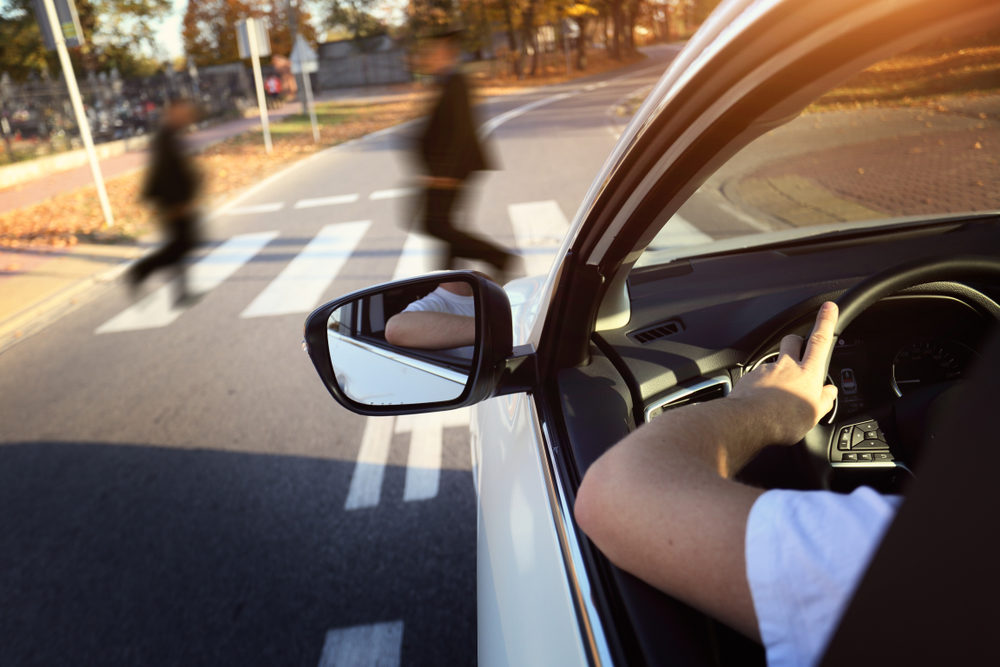
October is National Pedestrian Safety Month, a time to remind drivers, walkers, and cyclists that staying safe is a shared responsibility.
As the end of Daylight Savings Time approaches and nights become longer, the risk of pedestrian accidents increases. From September to February, over 30% of pedestrian fatalities occur between 6 p.m. and 9:00 p.m.
Anyone walking can be a pedestrian; you don’t need to be actively using a crosswalk. People have been struck by a vehicle on sidewalks, in parking lots, garages, and even in their own driveways. In 2020, 6,504 pedestrians were killed by drivers, the largest number since 1989, according to the Governors Highway Safety Association (GHSA). This is a 21% increase over 2019 and equates to a traffic-related pedestrian death every 84 minutes.
Although many pedestrian accidents occur due to driver negligence, a pedestrian’s disregard for traffic signals and walkways, cell phone use and other distractions, and impairment from alcohol and drugs, can also result in a serious or fatal accident. Therefore, it is imperative for drivers and pedestrians alike to follow simple rules to reduce this alarming problem for those on foot.
If you’re driving…
- Watch for pedestrians everywhere, at all times. Be attentive, especially around schools and neighborhoods where children are present.
- Pay attention to traffic controls and speed limits, especially in school zones and neighborhoods.
- Slow down and be prepared to stop when turning or otherwise entering a crosswalk.
- Never pass vehicles stopped at a crosswalk. There may be people crossing that you can’t see.
- When turning, yield to people walking and biking.
- Do not assume the pedestrian sees (or hears) you.
- Turn on your headlights and use extra caution when driving in hard-to-see conditions, such as nighttime or bad weather.
- Be cautious when backing up – pedestrians, especially young children, can move across your path.
- Avoid all distractions, including texting or talking on cellphones and/or eating or drinking, when behind the wheel.
- Never drive impaired.
If you’re walking…
- Walk on sidewalks whenever possible. If one isn’t available, walk facing traffic and as far from traffic as possible.
- When possible, cross the street at intersections or marked crosswalks, and look for cars in both directions, including those turning.
- Do not cross in the middle of a street or between cars.
- Before crossing, look left, right, and left again. Continuously watch for traffic as you cross the street.
- Watch for turning vehicles, even if there is a “No turn on red” sign.
- Be extra careful crossing streets or entering crosswalks at night when it is harder to see or when crossing busier roads with more lanes and higher speed limits.
- Watch for cars entering or exiting driveways or backing up in parking lots.
- Be visible. Wear something light or reflective after dark.
- Watch out for blind spots around trucks and buses.
- Stay alert at all times. Don’t be distracted by electronic devices that take your eyes (and ears) off the road, especially when crossing the street.
Following these tips will help keep pedestrians, but most importantly to all – use common sense. This October and throughout the year, let’s work together to keep everyone safe on our roadways.
@thumbnail.jpg)
Experienced attorney, lawsuit funding expert, certified civil mediator, and award-winning author of the Zachary Blake Legal Thriller Series. The series features super-trial lawyer Zachary Blake handling "ripped from the headlines" legal and political issues of the day. The series currently consists of Betrayal of Faith, Betrayal of Justice, Betrayal in Blue, Betrayal in Black, and Betrayal High, with a sixth Zachary Blake novel due out later this year. To learn more about these topical social justice legal thrillers. please visit markmbello.com. Mark is a member of the State Bar of Michigan, a sustaining member of the Michigan Association for Justice, and a member of the American Association for Justice.











Comments for this article are closed.